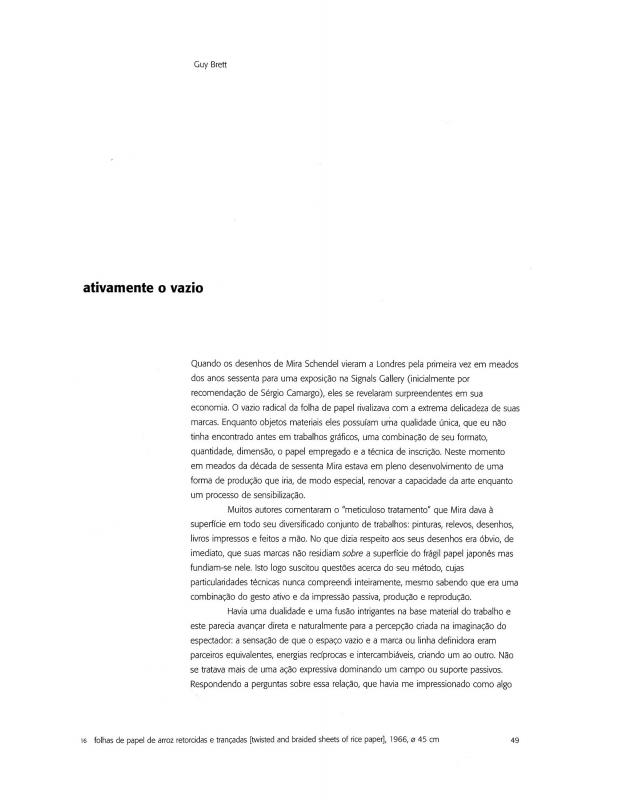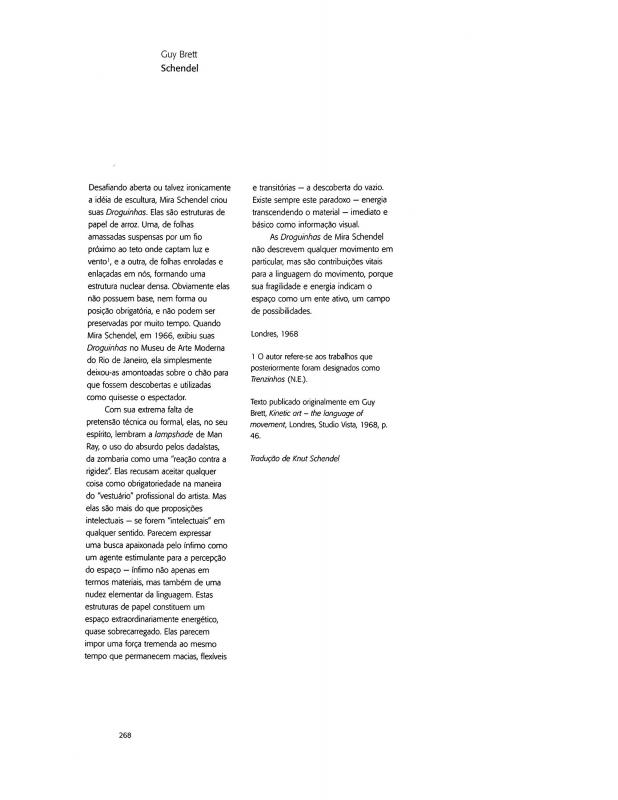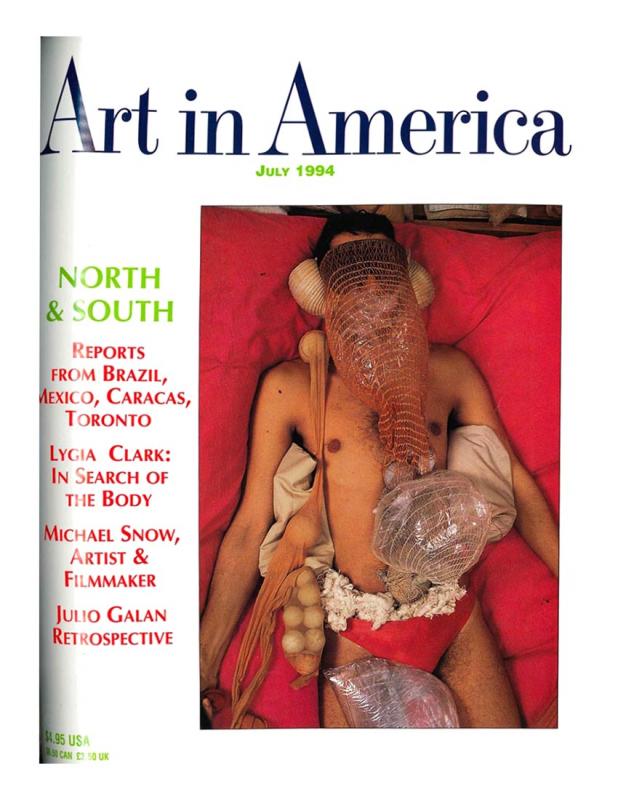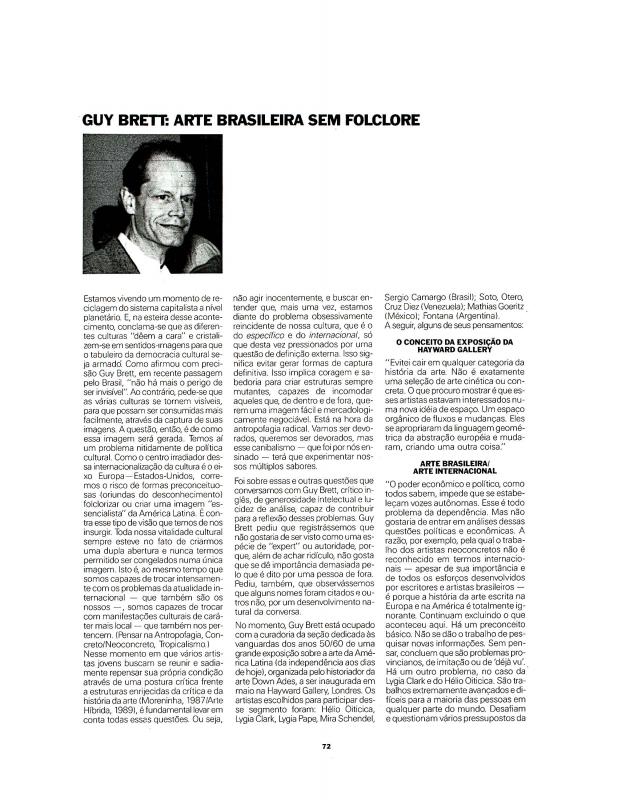English art critic Guy Brett uses the image of a “radical leap” to examine from a critical and analytic perspective the change effected by those artists who, on the basis of the Constructivism of the fifties and sixties, shook up contemplative art, rendering it participatory and formulating novel ties between art and the space in which it operates. The experimental practices formulated in Latin America by Kinetic art and Op art in the sixties, and by Neo-Concretism in Brazil, subverted the “distanced” relationship between the viewer and the work prevalent until that time. Brett’s essay was featured in the catalogue to the show on Latin American art organized by Dawn Ades at the Hayward Gallery in London. It had considerable impact on reflections on the place of Latin American art in narratives of Western art.
London-based art critic, curator, and international lecturer Guy Brett (b. 1942) was the cofounder, with Paul Keeler, of the gallery Signals and of the publication Newsbulletin of Signals. He worked closely with Mira Schendel, holding a solo show of her work at Signals in 1966. Brett’s essays, which almost always have a radical or experimental bent, are published regularly in international art magazines; he has also written monographic essays. He did significant work on Kinetic art from the time of that movement’s emergence in Europe and, in particular, in Venezuela. His widely known books include Kinetic Art – The Language of Movement (London: Studio Vista, 1968); Force Fields – Phases of the Kinetic (London: Hayward Gallery, 2000); Carnival of Perception – Selected Writings on Art (London: Institute of International Visual Arts, 2004); and Brasil experimental - arte/vida: proposições e paradoxos (org. Kátia Maciel) (Rio de Janeiro: Contra Capa Livraria, 2005).
For a wider vision of Brett’s work on Brazilian art, see “Uma cronologia de encontros, 1964-2005” [doc. no. 1111303]. He has also written monographic works on Brazilian artists, such as a discussion of Mira Schendel’s radical formulations in “Ativamente o vazio” [doc. no. 1111214] and “Schendel” [doc. no. 1111213]; and of the innovations formulated by Lygia Clark in “Lygia Clark: In Search of the Body” [doc. no. 1232526]. Finally, for his thoughts on the work produced in the seventies in Brazil, as gathered by critic Márcio Doctors, see “Guy Brett: arte brasileira sem folclore” [doc. no. 1110958].





